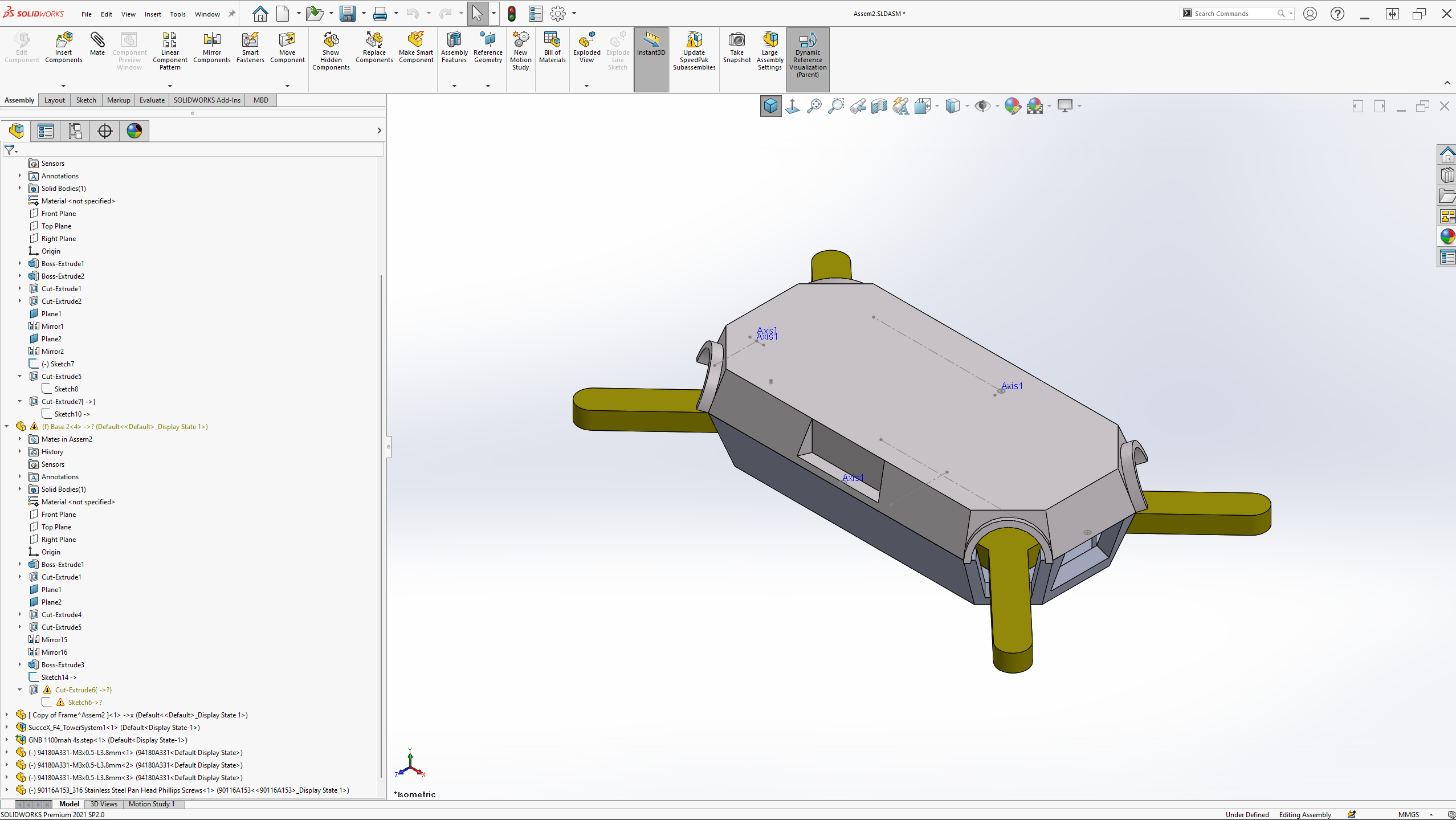
The
Flying Camera -Part 1
(Sep 2023 - Present)
I am working on designing and building a FPV drone of my own from scratch.
Part 1 - brainstorming and CAD design
PROBLEM STATEMENT
Ah, the joys of travel! But you know what bugs me? Gravity. Yeah, that pesky 9.81 m/s^2 thing. It's like the universe saying, "Nope, you can't get the full view!" I mean, come on! I want to soak in every scenic angle, not just what's at eye level. That's why I dream of soaring through the skies like a bird, courtesy of my trusty FPV drone. No more limits, just me and the world, in all its gravity-defying glory
Project Target
Design and build a flying camera
Starting with a sketch is always the best way to kick off any design project! It lets me visualize my ideas and plan out what parts I'll need to model in 3D. Plus, it helps me figure out which pieces can stand alone and which ones should be grouped together as assemblies. Making these decisions during the sketching phase sets me up for success down the line!
Optimize the weight and energy
I'm aiming to create a mid-sized drone that stays under 250 grams, which is the standard size for non-professional drones in Canada. As you probably know, the battery's capacity is directly related to its weight. So, while having more battery power means more energy, it also means added weight, potentially leading to shorter flight times. It's all about finding that sweet spot between power and weight for optimal flight duration!
Explore the opportunity from different angle
I've created an Excel sheet to crunch the numbers for size and weight, making optimization a breeze. Keeping things simple is key here—it'll make assembly a breeze and allow for easy modifications if something doesn't quite fly right.
Steps
1. Hand sketched
I've sketched out a rough idea of
how I imagine of a middle-sized drone.
It'll need a frame with a diameter
of around 210 millimeters and 5-inch
propellers to keep it flying smoothly.
2. Part research and BOM
I'm putting together a spreadsheet
to track the components needed and their prices.
My goal is to keep everything under
1,000 CAD for now, knowing I
can always upgrade later if needed.
3. 3D design and 2D drawing
I'm diving into part and assembly modeling
using SolidWorks.
Currently, I've got 7
components lined up, including the frame,
battery, cover, and props. Let's bring them all together!
4. Optimize the design to FDM
I'm focusing on designing the drone
to make 3D printing as easy as possible.
This means optimizing the design for printability
to ensure smooth production and assembly.

My Approach

Dec 2023
Sketching
The Result ... "FOR NOW"
The designing stage marks the beginning of my drone project journey. Next up, I'll dive into figuring out the wiring and programming to bring it to life. With parts expected to arrive in the next month, stay tuned for exciting updates! 🚀


